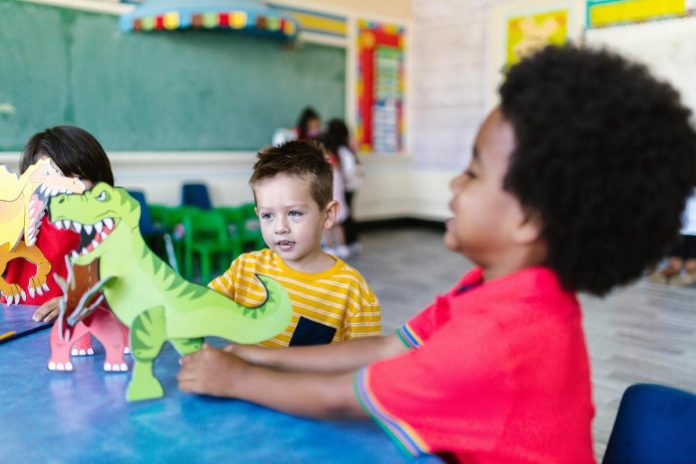Are you a first-time parent who got excited at the first sign of your baby’s developmental milestones? Or are you a seasoned parent who just wants to make sure their 3 year old is on track? Regardless of where you stand, we bring you the best activities for 3 year olds that are a great way to spend some quality time with your kiddo while also promoting their growth and development.
Math & ELA | PreK To Grade 5
Kids see fun.
You see real learning outcomes.
Watch your kids fall in love with math & reading through our scientifically designed curriculum.
Parents, try for free Teachers, use for free
Preschool Activities for 3 Year Olds for Social and Emotional Development
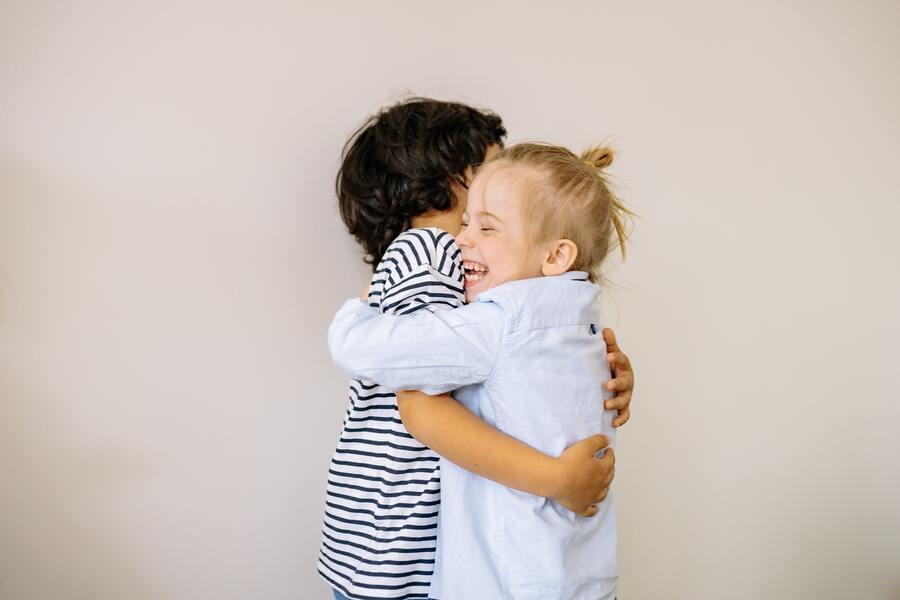
1. Ball Games
What you need:
1 ball
How to play:
Rudimentary ball games such as catching, dribbling, and even bouncing the ball off the wall are thought of as great developmental activities for 3-year-olds that can help them improve their gross motor skills. But if you think for a minute, you will realize they are also great ways to promote your child’s social and emotional development. While playing with a ball, your child will learn to share, take turns, and follow rules. All of these skills are essential for their social and emotional growth.
Skills your preschooler will learn:
These activities for preschoolers will help them learn how to share, take turns, and cooperate with others. Preschoolers also learn to develop a sense of fair play when they play together with a ball.
2. Sing Good Manners Songs
What you need:
A list of good manners songs, a music player device (optional)
How to play:
One of the great activities for 3-year-olds at home (or anywhere!) is to sing songs with them. Songs are a great way to introduce concepts to young children. And what better way to teach your child good manners than through music?
There are tons of great songs out there that teach kids the basics of good manners, such as please and thank you, washing their hands, and covering their mouths when they sneeze or cough. If you need some inspiration, check out our list of good manners songs for kids:
- “Hello, Hello” by Jeanne Nelson and Hector Marín
- “Manners Matter Everywhere” by CKK Educational
- “Please and Thank You” by Intelli-Tunes
- “Thank You” by Jaycie Voorhees
- “The Magic Word” by Dr. Mac. & Happy Kids Songs
You can even turn it into a game by having your child act out the lyrics as you sing.
Skills your preschooler will learn:
This can also be used as indoor activities for 3-year-olds. Singing songs about good manners with your child is a great way to help them learn and remember the basics of polite behavior. And these basics will help them grow into well-adjusted and socially responsible individuals.
3. DIY Emotions Discovery Bottles
What you need:
5 plastic bottles with lids; 1 black Sharpie; small items to represent different emotions, such as pom poms or glitters, googly eyes, or pieces of crumpled paper; colors/paints; glue and scissors
How to play:
Inspired by Disney Pixar’s Inside Out, these DIY emotion discovery bottles are a fun and easy way to help your child understand, express, and cope with their emotions. Here’s how you can make an:
Anger Discovery Bottle
Pour red paint into the bottle until it is about half full. Add small pieces of black paper to represent anger. Screw on the lid and shake well.
Joy Discovery Bottle
Pour yellow paint into the bottle until it is about half full. Add small pieces of glitter to represent happiness. Screw on the lid and shake well.
Sadness Discovery Bottle
Pour blue paint into the bottle until it is about half full. Add small pieces of crumpled paper to represent sadness. Screw on the lid and shake well.
Fear Discovery Bottle
Pour green paint into the bottle until it is about half full. Add small pieces of googly eyes to represent fear. Screw on the lid and shake well.
Disgust Discovery Bottle
Pour brown paint into the bottle until it is about half full. Add small pieces of pom poms to represent disgust. Screw on the lid and shake well.
You can discuss what colors and items to choose to represent different emotions with your child. You can also talk about when they feel different emotions and what they can do to cope with them.
Skills your preschooler will learn:
Making these DIY emotions discovery bottles with your child is a great way to help them understand their emotions and how to deal with them. It is also a fun activity that will allow them to express themselves creatively.
Related Reading: Creative Journal Prompts for Kids to Encourage Good Habits
Fun Activities for 3-Year-Olds to Encourage Speech and Language Development
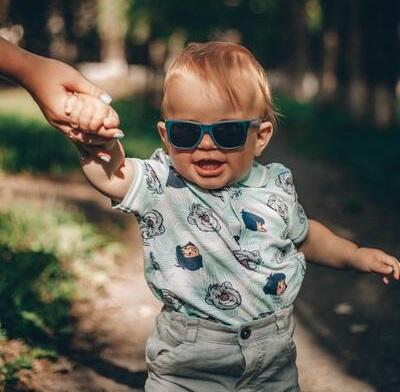
4. Model Good Speech
What you need:
Nothing!
How to play:
One of the best ways to encourage your child’s speech and language development is to model good speech yourself. When you talk to your child, use clear and simple words. You can repeat the words your child says and add to it. For example, if your child says, “I went outside,” you can say, “Yes, you went outside to play.” If your child asks for juice, you may say, “Do you want juice? I have apple juice and orange juice. Which one would you like?” You can also use props and gestures to help your child understand what you are saying. For example, if you are talking about a dog, you can make a barking sound and wag your fingers in the air.
While baby talk is okay if used occasionally, always follow it up with adult words and phrases. For example, if your child points to a dog and says, “Woof woof,” you can say, “Yes, that’s a dog. It says ‘woof woof.’”
You can also point out things around you and name them. For example, “That’s a tree. Look how tall it is! See how green its leaves are.”
Skills your preschooler will learn:
Modeling good speech for your child is a great way to help them improve their own speech and language skills. It also helps them understand the meaning of words and how to use them properly.
5. Monkey See, Monkey Do
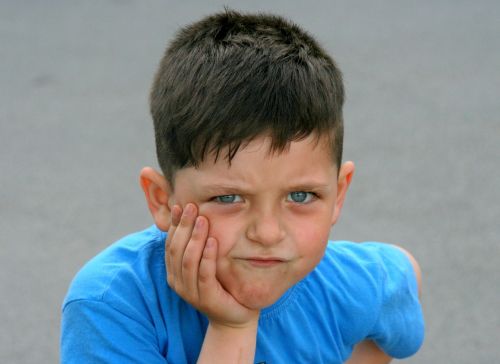
What you need:
Nothing!
How to play:
This game is all about facial expressions. Facial expressions are a vital part of non-verbal communication, which forms 60–65% of all communication. They can help convey feelings and emotions, as well as add meaning to what we say.
To play, choose a facial expression and have your child imitate it. For example, you can stick out your tongue, raise your eyebrows, or open your eyes wide. Once your child has made the same facial expression, ask them to describe what they did. For example, “I stuck out my tongue. Did you see how far I could stick it out? My tongue is long and slimy!”
You can also ask your child to make a certain facial expression and describe what feeling or emotion it shows. For example, “Can you make a surprised face? What does that face mean? That’s right, it means you’re surprised!”
Skills your preschooler will learn:
This game is a great way to help your child understand the meaning of facial expressions and how they can be used to communicate. It will also help them learn to control their own facial expressions.
6. Play the Telephone Game
What you need:
Toy phone or two cups and a string
How to play:
This classic game is a great way to encourage your child to improve their speaking skills and pick up phone etiquette, especially when you are camping.
Pretend to dial a call to your preschooler using the toy phone or two cups and a string. Have a conversation with them using made-up words or simple phrases. You can start by saying “Hello” and end with “Bye.”
After the conversation, ask your child to repeat the conversation with you. If they get it right, give them a thumbs up or a high five. If they make a mistake, help them correct it.
Skills your preschooler will learn:
Toy telephones are great for encouraging pretend play and helping children develop their communication skills. This game will also help your child learn how to listen carefully and pay attention to detail.
Most Effective Learning Activities for 3-Year-Olds for Sensory Development
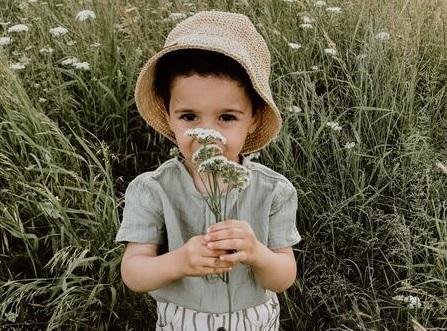
7. The Sensory Bin
What you need:
A small tub or container, items with different textures (such as objects from nature, small toys, and dry food items)
How to play:
Sensory bins are a great way to encourage your child to explore different textures and sensations. They also help promote calmness and focus.
To make a sensory bin, fill a small tub or container with items that have different textures. Leaves, rocks, sand, and feathers are great options. You can also add small toys and dry food items, such as rice, beans, and pasta.
Invite your child to explore the sensory bin with their hands. Encourage them to touch, feel, and smell the different items. You can also ask them to describe what they are feeling. For example, “I feel something soft. It’s smooth and silky.”
Always supervise little kids while they are playing with sensory bins as small items can be a choking hazard for young children.
Skills your preschooler will learn:
Sensory bins are a great way to help your child develop their sense of touch, smell, and sight. They also help them learn new vocabulary words to describe the different textures and sensations.
8. Smell and Seek
What you need:
Items with strong odors and scents (such as spices, essential oils, and perfumes), a clean towel or kerchief (on which you can spray the scent), a blindfold
How to play:
This game is a great way to help your child develop their sense of smell. To play, choose an item with a strong odor and scent. This could be a spice, essential oil, or perfume. Spray the towel or kerchief with the scent and put it over your child’s nose.
Now, blindfold your child and ask them to identify the scent. You can also ask them to describe what they smell. For example, “I smell something sweet. It’s floral and pretty.”
If your child is having trouble identifying the scent, give them a few clues. For example, “This is something that people wear.”
Or you may blindfold your preschooler and guide them around the house. With each room, ask them to identify what they smell. In the kitchen, for example, your child may identify the smell of pasta. Laundry rooms often have a distinct smell, as do bathrooms.
Skills your preschooler will learn:
The olfactory system is one of the most important sensory systems for human beings. This game will help your child develop their sense of smell and also improve their ability to identify different scents.
9. Frozen Treasure
What you need:
Freezer-safe container, water, items to freeze (such as plastic toys, coins, and buttons), kid-friendly tool kit (with toy pliers, screwdriver, and hammer), a big tub
How to play:
A great summer activity for kids in preschool, this game will help your children develop their fine motor skills as they try to retrieve frozen treasures.
To play, fill a freezer-safe container with water and add some small toys, coins, or buttons. Freeze overnight. The next day, set up a big tub in the backyard and invite your child to use the toy pliers, screwdriver, and hammer to chisel away at the ice and retrieve the treasures.
Skills your preschooler will learn:
A great sensory activity for toddlers, this game with chilled toys is sure to stimulate your child’s senses. As they use their hands to chisel away at the ice, they will also be improving their fine motor skills.
Related Reading: Co-curricular Activities and its Benefits for Students
Fun Activities for 3 Year Olds to Accelerate Their Cognitive Development
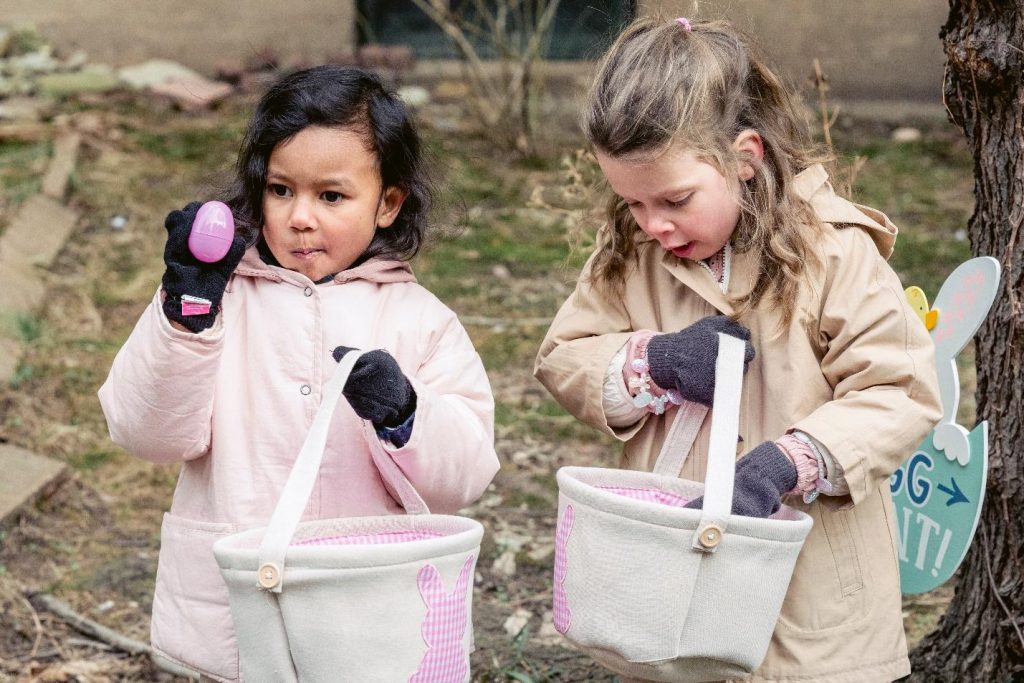
10. Treasure Hunt (with a Map and Clues)!
What you need:
A map of your home or backyard (you can even make one yourself); several small objects to use as “treasures,” such as lollies, toy cars, shells, etc.; paper and a pencil for each child
How to play:
- Create a simple map of your home or backyard. Include several rooms or outdoor areas, and ensure a “treasure” exists in each location.
- Write clues for each treasure on separate pieces of paper. The clues should be simple and easy to understand, such as “I am under the bed” or “I am in the toy box.”
- Give each child a map and one of the clues.
- Let them use the clue to find the treasure, and then give them the next clue until they’ve found all the treasures!
Skills your preschooler will learn:
One of the most fun activities for three-year-olds for developing problem-solving and critical thinking skills; it encourages kids to explore their surroundings. It’s also a great way to teach them about following instructions.
11. Identify Noises
What you need:
Sound recordings (optional)
How to play:
Ask your child to identify the sounds they hear every day, such as the sound of a car horn, a doorbell, or a dog barking. If you have sound recordings, you can also play these for your child and ask them to identify the noise.
Skills your preschooler will learn:
This activity will help your child develop their auditory processing skills as they listen to and identify different sounds. Cognitively, this activity will also help your child learn to categorize and classify different sounds.
12. Observe and Make
What you need:
Child-safe art supplies (such as playdough, paints, crayons, and markers)
How to play:
Head outside with your child and observe the world around you. Talk about what you see, feel, and smell. Encourage your child to use their senses to explore his surroundings. You can do this at home too. A chair, a pillow, a book, and a toy can all become interesting objects to observe. Invite your child to create a work of art inspired by what they observed. They can use playdough, finger paints, crayons, or markers to create their masterpiece.
Skills your preschooler will learn:
Great for cognitive development, this activity will help your child learn to use their senses to observe and explore the world around them. This activity will also help your child develop their fine motor skills as they manipulate the art supplies. They will also be practicing their observation skills and learning how to express themselves creatively.
Related Reading: Best Fun Games for Toddlers that Effortlessly Boost their Growth & Development
Outdoor Activities for 3 Year Olds for Development of Gross and Fine Motor Skills
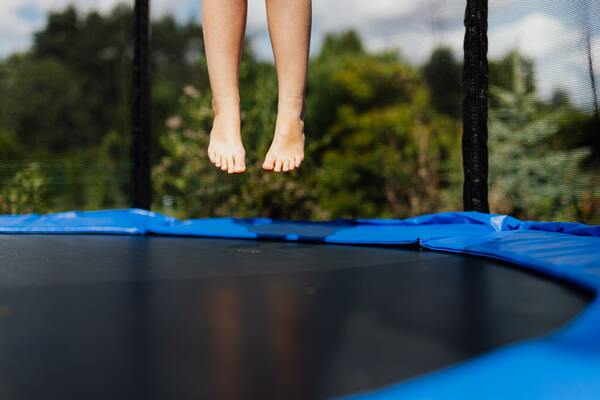
13. Trampolines
What you need:
A trampoline (or a bouncy castle)
How to play:
Bouncing is great for gross motor development, and it’s also a lot of fun! If you have a trampoline at home, let your child loose to burn off some energy. You can take your child to a local trampoline park if you don’t have a trampoline at home. Make sure to supervise your child while they are bouncing.
Skills your preschooler will learn:
This activity is great for gross motor development as it helps your child develop coordination and balance. Bouncing also helps to improve your child’s proprioception, which is the awareness of their body in space.
14. Animal Relays
What you need:
Stuffed toy animals (optional)
How to play:
This fun and active relay race will help your child develop their gross motor skills. You may use stuffed toys to show how an animal would move. But you can act out the animal movements without props, too.
To play, line up your child and their friends at one end of a park or backyard. At the other end of the park, place a toy or object that they need to get to. One by one, each child will act out the movement of an animal as they travel to the other end of the park to retrieve the object. They then need to bring the object back to the starting line and hand it off to the next child in line. The instructions may include actions like:
- Crawl like a crab
- Gallop like a horse
- Slither like a snake
- Waddle like a duck
- Stomp like an elephant
- Hop like a bunny
Skills your preschooler will learn:
The animal relay race game is a great fun activity for toddlers to learn about animals and how they move. Children also develop their gross motor skills as they move their bodies in new and creative ways.
15. Spray Bottle Race
What you need:
Some spray bottles, a large tub full of water, some floating bathtub toys
How to play:
Ask children to spritz water on their floating toy and make them move. The first one to move their toy to the finish line is the winner.
Skills your preschooler will learn:
This activity helps develop gross motor skills and hand–eye coordination. It is also a great way to encourage water play. Water play is known to have a calming effect on children and can help reduce anxiety and stress.
Related Reading: Signs That Your Child is Struggling in School
Conclusion
Developmental activities for 3-year-olds are great ways to help your child grow and learn. These activities can help improve gross motor skills, fine motor skills, cognitive development, and more. Be sure to supervise your child during these activities to ensure their safety. And most importantly, have fun!
Explore more online educational resources for kids that will help with their learning experience and make them smarter.
Frequently Asked Questions (FAQs)
What if my 3 year old does not match the set developmental milestones?
If your child does not seem to be meeting the developmental milestones for their age, it is important to speak to your child’s doctor. They can assess your child and give you guidance on what activities would be most beneficial for them.
What activities can toddlers enjoy without fighting?
There are many activities that toddlers can enjoy together. These include simple activities such as puzzles, painting, and block building. Encourage your child to try new things and find what they enjoy most. Just make sure there are enough items for everyone to avoid any fighting.
What is the best activity for a 3 year old to develop their imagination?
Many activities can help develop your child’s imagination. Some great examples include art, music, and pretend play. Encourage your child to use their imagination and be creative in their play. This will help them to develop their own ideas and stories.

















